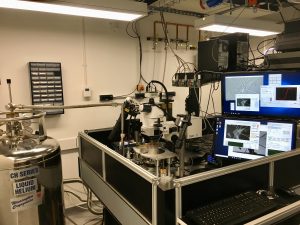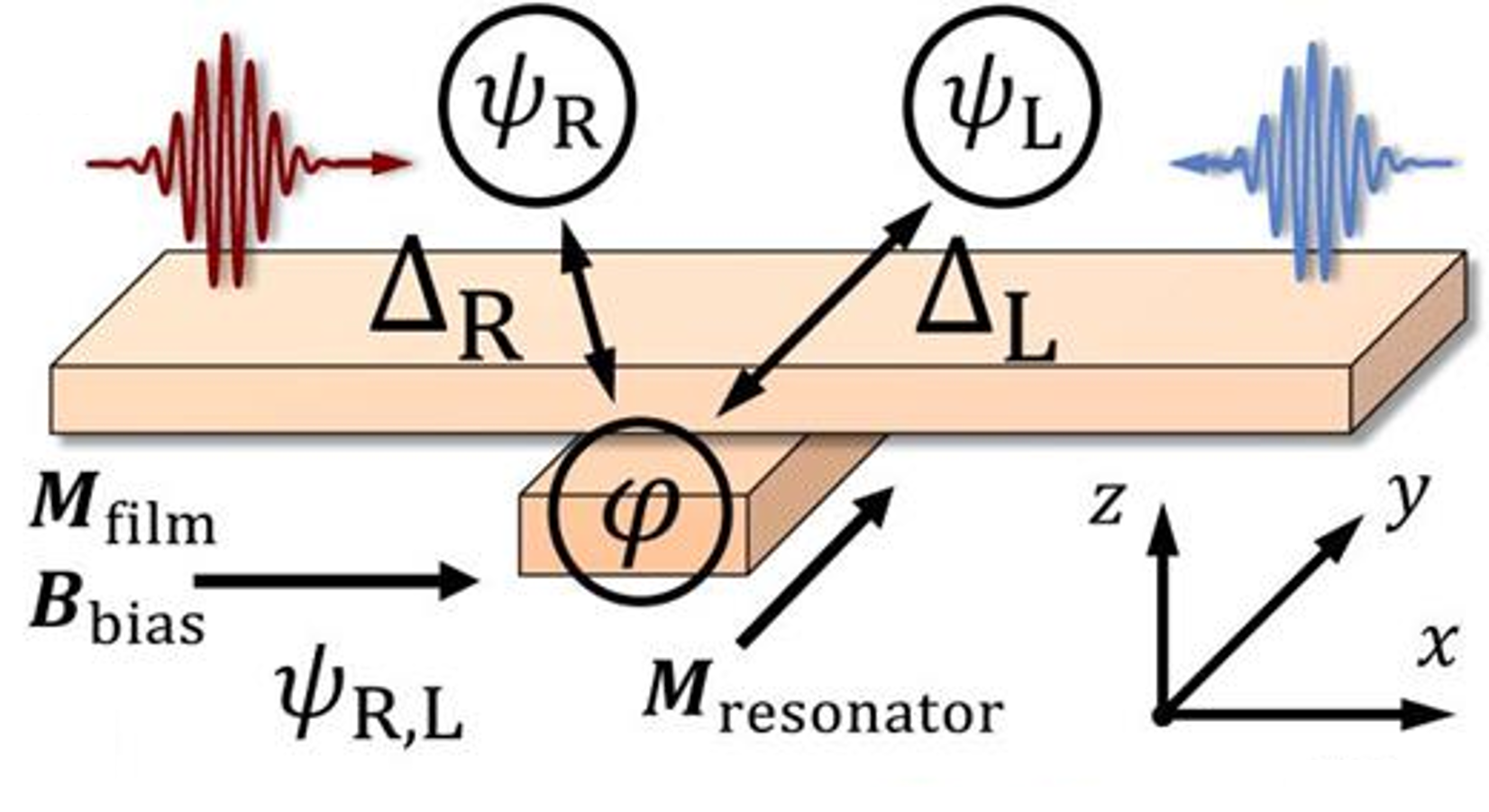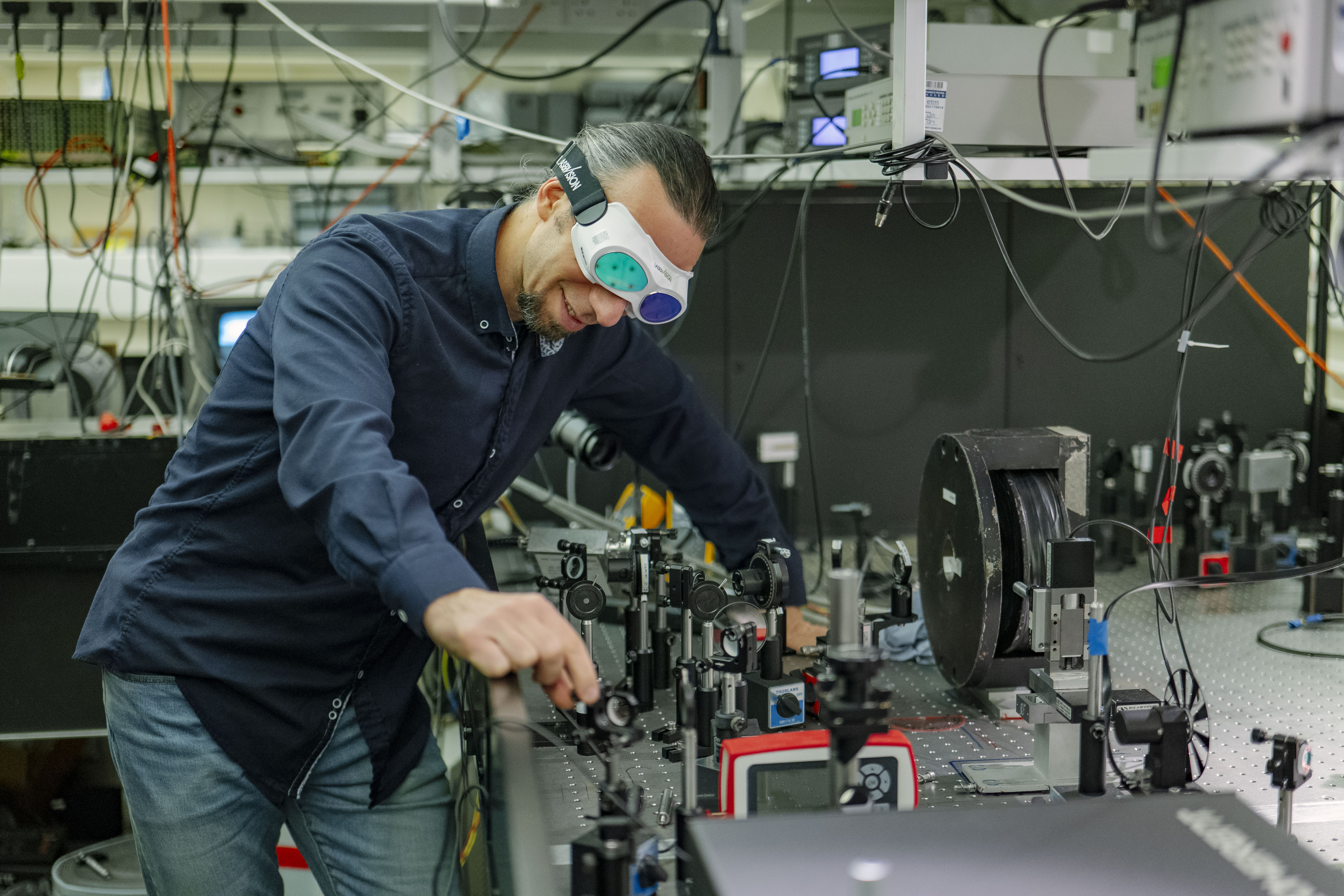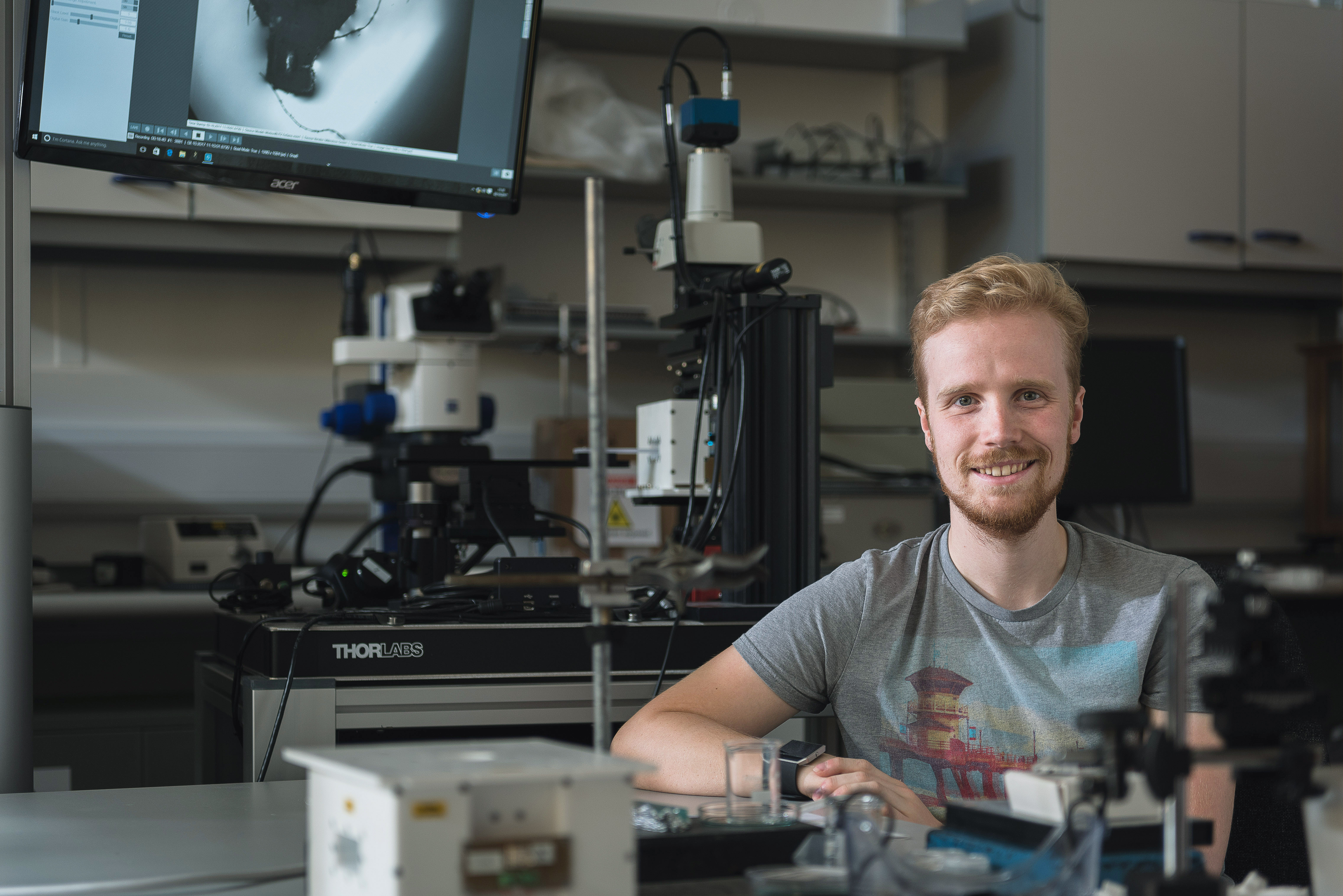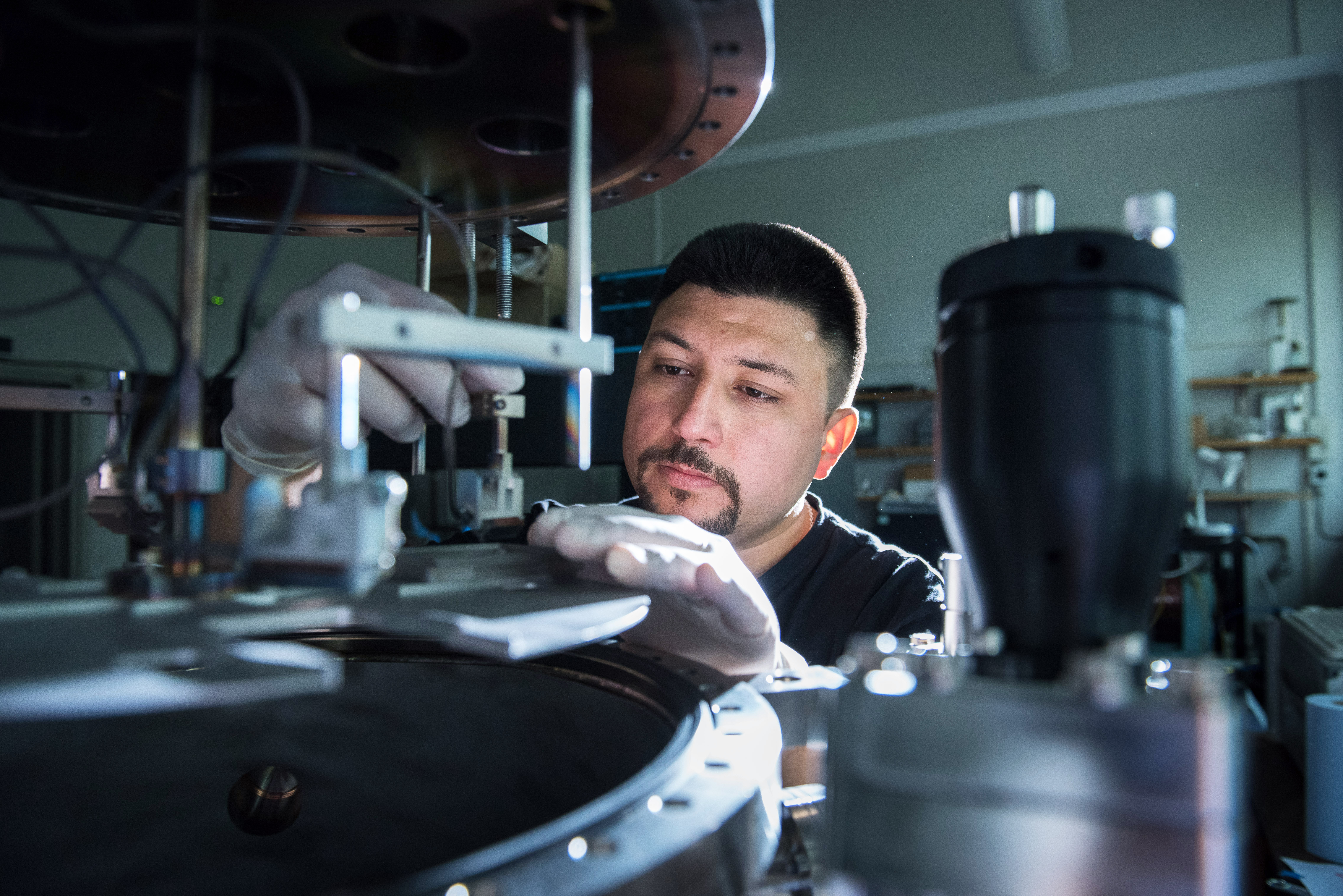Magnetic Metamaterials
Our research
Magnetic Materials
Known for thousands of years, magnetic materials are characterised by a strong correlation of the relative orientation of magnetic moments of individual electrons, ions or atoms, which is referred to as magnetic order. The order has a quantum-mechanical origin, making magnetism a unique quantum-mechanical phenomenon observed at room temperature. Magnetic materials have numerous technological applications, ranging from electrical motors to magnetic data storage, spintronics and magnonics.
In Exeter, we investigate both continuous and geometrically structured magnetic materials and their applications, using advanced experimental techniques, numerical simulations and analytical theory.
Our research
The focus of our current research is on:
- Nano-patterned soft magnetic materials used in magnetic read heads;
- Magnetic flux dynamics in magnetic write heads;
- Time-resolved magneto-optics and imaging techniques, including X-ray holography;
- Statics and dynamics of topologically complex micromagnetic textures in continuous and patterned magnetic films.
Spintronics
Spintronics is concerned with phenomena and device properties that depend upon the intrinsic spin angular momentum of the electron. Spin is most commonly transported through the translational motion of electrons, either with or without an accompanying flow of charge. Alternatively, spin can be carried via wave motion of localised spins, by so-called spin waves. Spintronics-based technology is already used in magnetic hard disk drives, where magneto-resistive sensors are used to read out recorded information, and in magnetic (MRAM) and spin-transfer-torque (STT-RAM) random access memory chips.
Other applications of spintronics include energy scavenging, nanoscale microwave oscillators and detectors, and platforms for neuromorphic and quantum computing. Since spin diffusion lengths and spin wave wavelengths are short, devices are formed from composite materials that are artificially structured at the micro and nano scale.
Magnonics
Magnonics studies phenomena associated with spin waves – elementary excitations of the magnetic order in magnetic materials – and their quanta – magnons. Spin waves carry energy and angular momentum via a collective wave (rather than translational) motion of spins. So, the relation between magnonics and spintronics is similar to that between AC and DC electricity.
As with other types of waves, the patterning and geometry of the structured magnonic medium can produce extraordinary effects on the propagation of magnons. Using this 'function by design' concept, magnonic metamaterial building blocks (or 'meta-atoms') can be used to tailor features such as the absorption, transmission and reflection of spin waves.
The ability to be reconfigured by external magnetic fields at rates ranging from DC to THz on nanometre length scales makes magnonic metamaterials an exciting platform for applications in unconventional data architectures (e.g. neuromorphic computing), signal filters and electromagnetic antennas.
EXTREMAG
The Exeter Time-Resolved Magnetism (EXTREMAG) Facility is an EPSRC-funded ultrafast laser facility that offers users (available to UK and international community via short form proposal) low temperature and high magnetic field environments in a variety of time-domain optical pump-probe, microscopy, and terahertz experiments.
EXTREMAG's facilities include:
- Coherent Fidelity HP modelocked laser (for use in THz spectroscopy and time-resolved scanning Kerr microscopy experiments),
- Coherent Monaco ultrafast diode pumped fibre laser and Opera-F optical parametric amplifier (for use in all-optical pump-probe measurements),
- Microstat He-R Cryostat,
- Microstat 5T superconducting magnet,
- and Spectromag SM4000 10T superconducting magnet.
Use of National and International Facilities
In addition to the suite of facilities at Exeter, our researchers are users of national and international facilities including x-ray synchrotron light sources, such as:
- the Diamond Light Source (near Oxford, UK),
- Advanced Light Source (Berkeley, California, USA),
- SOLEIL (near Paris, France),
- and the European Synchrotron Radiation Facility (Grenoble, France)
and neutron sources such as ISIS (near Oxford, UK) and Institut Laue-Langevin (Grenoble, France) to provide .
Our researchers in this area include:
 |
 |
 |
| Prof Alastair Hibbins | Dr Cameron Gallagher | Prof Feodor Ogrin |
 |
.png) |
-150x150.png) |
| Dr Maciej Dabrowski | Prof Mustafa Aziz | Dr Paul Keatley |
 |
 |
 |
| Prof Rob Hicken | Dr Rupam Das | Prof Volodymyr Kruglyak |


